When you watch a rugby match, you’ll probably notice that some players wear tape around their wrists. This article takes a detailed look at why rugby players do so.
And if you’re starting out in rugby and would like to give tape a try, we’ve got some advice on how to do it properly.
Why Do Rugby Players Tape Their Wrists?
Many rugby players wrap tape around their wrists before they take to the field. A common reason is better muscle support and handgrip when tackling, passing, and catching the ball.
Wrist tape also provides insulation and warmth in colder seasons. Another reason is to avoid wrist injuries.
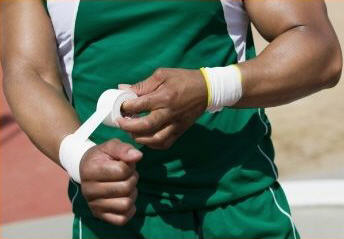
When I questioned players in my club as to why they wore tape, the three reasons above were the most common answers.
I got a few more suggested reasons that are probably less common. Some mentioned that tape can hide energy bracelets or tattoos that could fall foul of the match referees.
And a few players mentioned that the ritual of wrapping tape around their wrists gets them mentally confident for matches.
Let’s dive into these benefits, one by one.
Taping Wrists For Muscle Support and Hand Grip
Many players feel that providing some compression to tendons and muscles makes them stronger.
Keeping the wrist locked into a neutral position keeps the hand in the strongest orientation to the forearm muscles. This allows the force generated by strong forearms to be passed across the wrist and into the fingers.
The force strengthens fingers which allows them more power to grip. This gives more hand strength for passing, for tackling, or for catching at full stretch in a line out.
This player’s routine is to wrap tape around his wrist and extend it to the thumb:
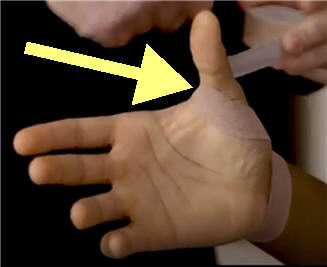
Taping Wrists For Insulation and Warmth
If you take a look at your wrists, you will notice a large number of blood vessels right near the surface on both the front and back of the hand.
The second thing that you will notice is tendons, not muscle! There is almost no fat and no muscle to insulate this joint, even on the heftiest of players.
With all those blood vessels near the surface, a tremendous amount of heat can be lost through the wrist on a cold day. This can leave your hands chilled and clumsy i.e. the perfect state to fumble the ball.
Wrist tape helps insulate this area by putting another few layers between the skin and the cold air. The tape helps hold in more heat which also keeps the hands warmer.
Warm hands are more flexible, stronger, and capable of moving faster and gripping harder. Obviously, this makes you better able to catch, pass, and grab, which makes you a more effective player
Taping To Reduce Wrist Injuries
Studies show that one of the most common types of injury in rugby is to the wrist, hand and fingers. That area counts for about 15% of all injuries.
Heavy tackles

One scenario is when the wrist gets bent either back or forward when the player has their arms out to break a fall while being tackled.
As the player falls, the wrist can end up supporting the weight of the entire body as it hits the ground. Obviously, this is a huge amount of stress on a relatively fragile joint.
A good tape job can stop the wrist from bending to the point where muscle, tendon, or even bone is injured.
It also holds the hand in a strong neutral position, so it is less likely to hit the ground at a vulnerable angle.
Charge downs
One of the most exciting sights in rugby is a defensive player leaping forward arms outstretched to charge down a kick.
The ball is coming off the kicker’s foot at high speed. If the defender is successful, that ball slaps the hands at a very high velocity!
Usually, this just stings the hands. But it can also bend the wrists back sharply. Wrist tape may help protect from strains.
This player is in the process of charging down the scrum half. Notice that he’s only taped one hand.
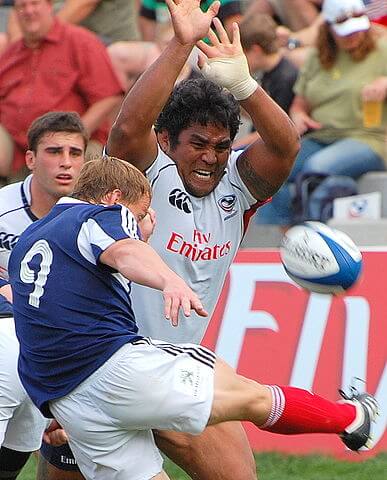
He has probably injured that hand or wrist earlier in the season and is looking for extra protection.
Taping To Hide Jewellery Or Tattoos
By jewellery, I don’t mean your grandmother’s diamond-studded bracelet. I’m referring to items like energy bracelets which are quite popular across sports players.
The rules of Rugby Union are very clear when it comes to bracelets of any kind:
“A player may not wear…Jewellery“
World Rugby Laws
The reason is to avoid injuries through snagging fingers or scraping skin and faces.
Some players want to wear their bracelets for luck. Superstition is still strong in sport! They may cover up the bracelet with tape.
However, tape sometimes unravels in matches. Referees will take a dim view if they spot jewellery on the field.
Hiding tattoos
This is probably less of a problem in rugby than other sports. Plenty of players have tattoos covering their entire arms.
As tattoos are a cultural tradition in some rugby-playing countries and communities, World Rugby does not prohibit them.
However, some youngsters have been known to get tattoos of questionable taste when on vacation. A little too much beer is often the reason!
Will your proud grandparents be glued to a live stream of your club match? Roll out that tape!
Taping Wrists For Confidence
When I surveyed my friends about wearing tape, most of them gave the reasons I’ve already covered.
However, there are lots of players who don’t tape their wrists. Some chuckled and said that their mates wore tape “for the look”.
If you see an elite international player in your position wearing wrist tape, then it’s understandable to follow their example.
If that makes less experienced players feel more confident, then all the better. Confidence goes a long way in rugby!
Just be careful to apply the tape properly, and don’t make it too tight. That will undo any good that tape provides. Our last section gives you tips on how to wrap your wrists.
Other Sports Where You’ll See Wrist Tape
Rugby isn’t the only sport where you’ll see players wearing wrist tape. Let’s take a look at a few other examples.
American Football
One of the most obvious examples would be linebackers in the NFL.
Like rugby, these are big people who spend the match running into and tackling other big people and getting knocked to the ground.
Also like rugby players, they use wrist tape to protect from injury and to improve their grip for tackling. The tape helps prevent their wrists from getting twisted and bent in collisions, whether with other players or with the turf.
Soccer
The entire purpose of goalkeepers in soccer is to get in front of a ball being kicked at them. This is rather like a rugby player charging down a kick!
Just like the rugby players, goalies tape their wrists to prevent them from getting bent back by a speeding ball.
Baseball
Baseball fielders usually wrap tape around their glove hand.
This is to protect their wrists from the force of a hard ball dropping from the sky.
Wrestling And Martial Arts
Grapplers often tape their wrists as well.
In grappling sports, grip strength is crucial. Their joints are often getting twisted while grabbing an opponent. Getting driven to the ground is also common.
Wrist tape provides support in these scenarios, as we’ve described for rugby players.
How To Tape Your Wrists For Rugby
There are two ways rugby players tape their wrist:
- around the wrist only, or
- extending up and around the thumb.
Both methods serve slightly different purposes.
Around the wrist only
The simple tape around the wrist is fairly self-explanatory. You will need two kinds of tape: elastic adhesive bandage and zinc oxide tape.
Elastic adhesive bandage is a very lightweight bandage that you can roll multiple times around the wrist.
Our best buy on Amazon is from Tiger Tapes – check out the price at this link.
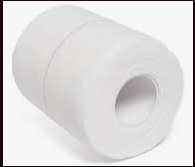
Zinc oxide tape is a highly moisture resistant cotton sports tape. It’s commonly used for wrapping joints because it’s stiffer than other sports tapes. Because of this, it’s better at stabilizing joints and limiting movement.
We like Vulkan’s tape on Amazon – check out the price at this link.
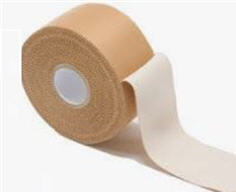
Start by holding one hand in a neutral position. Wrap an elastic adhesive bandage a few times around the center line of the wrist.
Next, you wrap zinc oxide tape around the elastic tape.
Test the joint by rotating your wrist. It shouldn’t be too tight or too loose.
If you feel you need more support or limitation, add more zinc oxide tape until you get the result you want.
Extending to the thumb
The other option is to bring the tape up and around your thumb as well.
Taping your thumb this way prevents your thumb from getting overextended backwards. At the same time, it allows flexibility to make the plays you need to make.
Here, you take the elastic adhesive bandage and pass it around your wrist, as we described before.
However, you then take the tape and come straight up the palm from the wrist and across the webbing between the thumb and index finger.

You pass the tape fully around the thumb and cross over to the heel of the palm and back across the back of the hand and around the thumb again.
You can go around the thumb this way three or four times, being careful not to make the tape so tight as to cut off circulation.
You do not want to use zinc oxide tape on your thumb! The stiffness of the tape will lock your thumb in place, which will limit your ability to grip, grab, or catch.
You could still wrap zinc oxide tape around the wrist portion of the tape job for extra support there, while still giving the thumb mobility.
More Uses For Tape
If you squint at the TV screen, you may spot that some players have messages written on their tape. This has got some into trouble! You can read more on our article on what rugby players write on their wrist tape.
You’ve probably noticed that players don’t just tape their wrists. You’ll see tape on thighs and heads as well. If you’re wondering what’s going on, check out these articles: